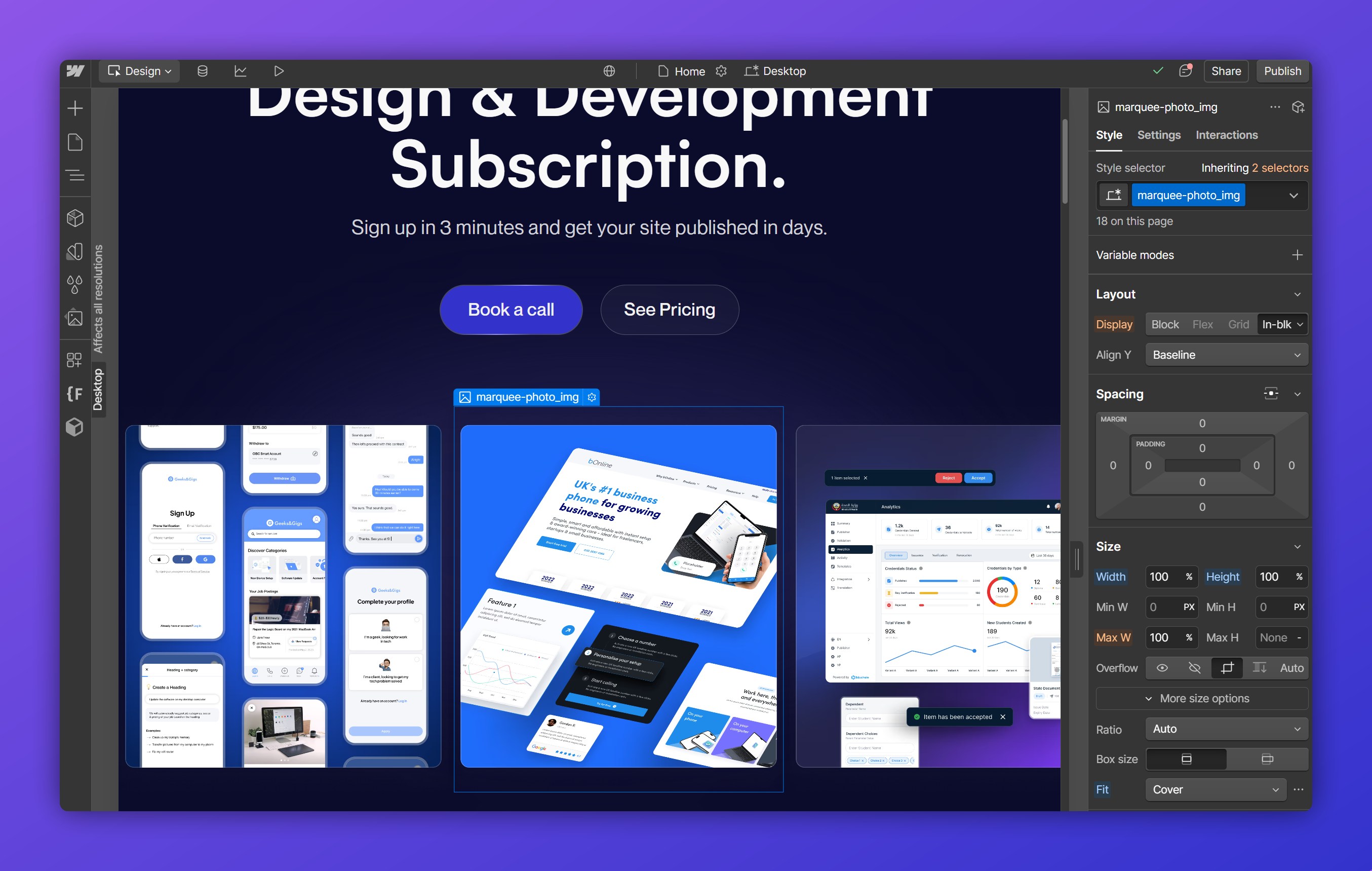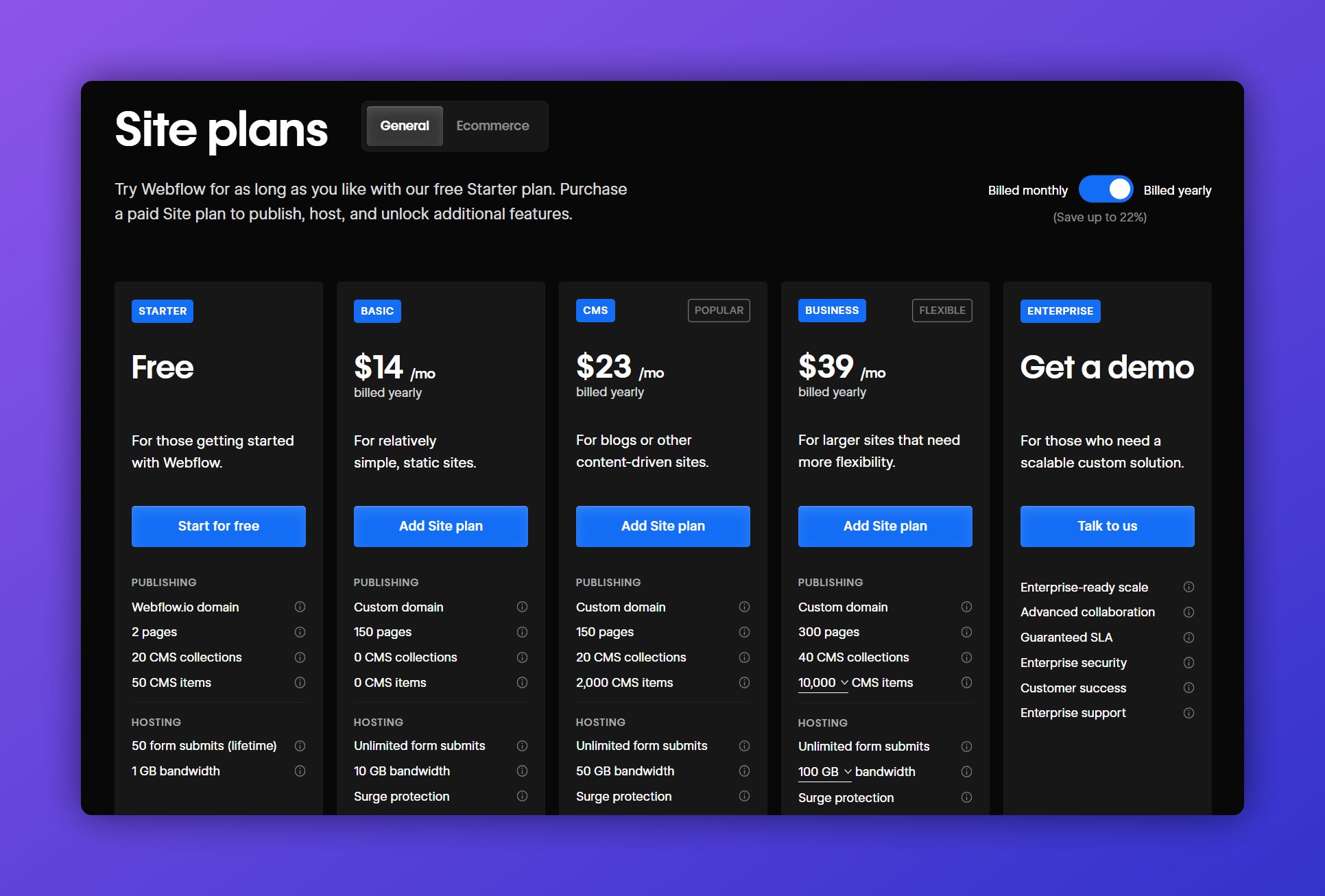TL;DR
Unbounce and Webflow serve different purposes in web design and marketing.
Unbounce – Best for marketers who need high-converting landing pages with built-in A/B testing, conversion analytics, and marketing tool integrations.
Webflow – Ideal for designers and developers looking for full creative control over websites, with advanced customization, CMS integration, and SEO tools.
Ease of Use – Unbounce has a simple drag-and-drop interface, whereas Webflow offers more design flexibility but has a steeper learning curve.
Customization – Unbounce is optimized for landing pages, while Webflow allows full-scale website creation with animations and interactivity.
Pricing – Unbounce charges based on landing pages and conversion-focused tools, while Webflow offers flexible plans based on website complexity and hosting needs.
Choose Unbounce if you prioritize lead generation and quick deployment of landing pages.
Go with Webflow if you need a highly customizable website with design freedom.
In the world of digital marketing and web development, Unbounce and Webflow stand out as two powerful platforms, each catering to distinct needs. Unbounce is widely recognized for its high-converting landing pages, while Webflow provides a robust, no-code web design experience with extensive customization options.
Choosing between these platforms depends on your specific requirements: Are you looking for a quick and efficient way to create landing pages that drive conversions? Or do you need full control over a website's design and functionality?
In this article, we’ll compare Unbounce and Webflow across key areas, including ease of use, customization, SEO, pricing, and support, helping you determine the right fit for your project.
Platform Overviews
Unbounce
Unbounce is a specialized platform designed for creating high-performing landing pages. Its drag-and-drop interface enables marketers to design, launch, and optimize landing pages without needing coding skills.

Key Features:
- A/B Testing – Optimize landing pages through split testing.
- Smart Traffic – AI-driven traffic optimization to increase conversions.
- Pop-ups & Sticky Bars – Enhance lead capture and engagement.
- Integrations – Seamless connections with CRM, email marketing, and automation tools like HubSpot, Zapier, and Salesforce.
Webflow
Webflow is an all-in-one web design and development platform that allows users to create responsive websites without needing to write code. It combines a powerful visual designer with a built-in CMS, SEO tools, and advanced hosting services.

Key Features:
- Visual Designer – Full creative control over layout, typography, and animations.
- CMS Integration – Dynamic content management system for blogs, portfolios, and e-commerce.
- SEO Optimization – Built-in tools for metadata, sitemaps, and indexing.
- Hosting & Security – Fast, scalable hosting with enterprise-level security.
Ease of Use
Unbounce offers a straightforward drag-and-drop interface, making it accessible for users without a technical background. It provides pre-designed templates that simplify the design process, allowing marketers to launch pages quickly.
Webflow, on the other hand, provides a more flexible visual editor that requires some familiarity with web design concepts. While it has a steeper learning curve, the platform offers more control over design elements, appealing to those with prior design experience.
📢 Need a seamless, high-converting landing page or an advanced Webflow site? Talk to our experts at Nexus Creative.
Design and Customization
Unbounce is focused on landing page creation, offering a variety of templates optimized for conversions. However, it is limited when it comes to building full-scale websites or complex applications.
Webflow, in contrast, provides advanced design capabilities with features like custom interactions, animations, and a dynamic CMS. It allows designers to craft unique, tailored websites with complete creative freedom, making it the superior choice for those who need full customization.
SEO and Marketing Features
Unbounce is primarily designed for lead generation, with built-in A/B testing, conversion analytics, and direct integrations with CRM and email marketing platforms. However, its SEO capabilities are relatively limited, as it is not intended for full-scale website optimization.
Webflow includes robust SEO tools such as customizable meta tags, alt text, and automatic sitemap generation. It also supports integrations with marketing tools, though some setup may be required to match Unbounce’s out-of-the-box marketing automation features.

🚀 Want an SEO-optimized Webflow site that ranks and converts? Let Nexus Creative build it for you.
Pricing
Unbounce follows a tiered pricing model based on the number of conversions and landing pages, making it a great option for businesses focused on conversion-driven campaigns. Plans start at $99/month for basic users.

Webflow offers flexible pricing based on website complexity and hosting needs. While a free tier is available, premium plans start at $14/month for basic sites, with CMS plans beginning at $23/month.

Customer Support and Community
Unbounce provides customer support via email and live chat, alongside extensive learning resources such as webinars and case studies.
Webflow has an active community of designers and developers who contribute templates, solutions, and support through forums. Additionally, Webflow University offers comprehensive tutorials to help users master the platform.
Conclusion
Unbounce vs. Webflow – Which One Should You Choose?
- Choose Unbounce if you need to quickly create high-converting landing pages with built-in A/B testing and marketing automation.
- Choose Webflow if you want full creative control over a website, advanced customization, and CMS integration for long-term scalability.
Both platforms offer unique benefits, and the best choice depends on your business goals and technical expertise. If you're still unsure, consider partnering with Nexus Creative for expert guidance on the best web solutions tailored to your needs.
📞 Need help choosing the right platform? Contact Nexus Creative today!
Additional Resources
- Unbounce Official Website
- Webflow Official Website
- Nexus Creative Blog – Expert insights on web design and marketing.














